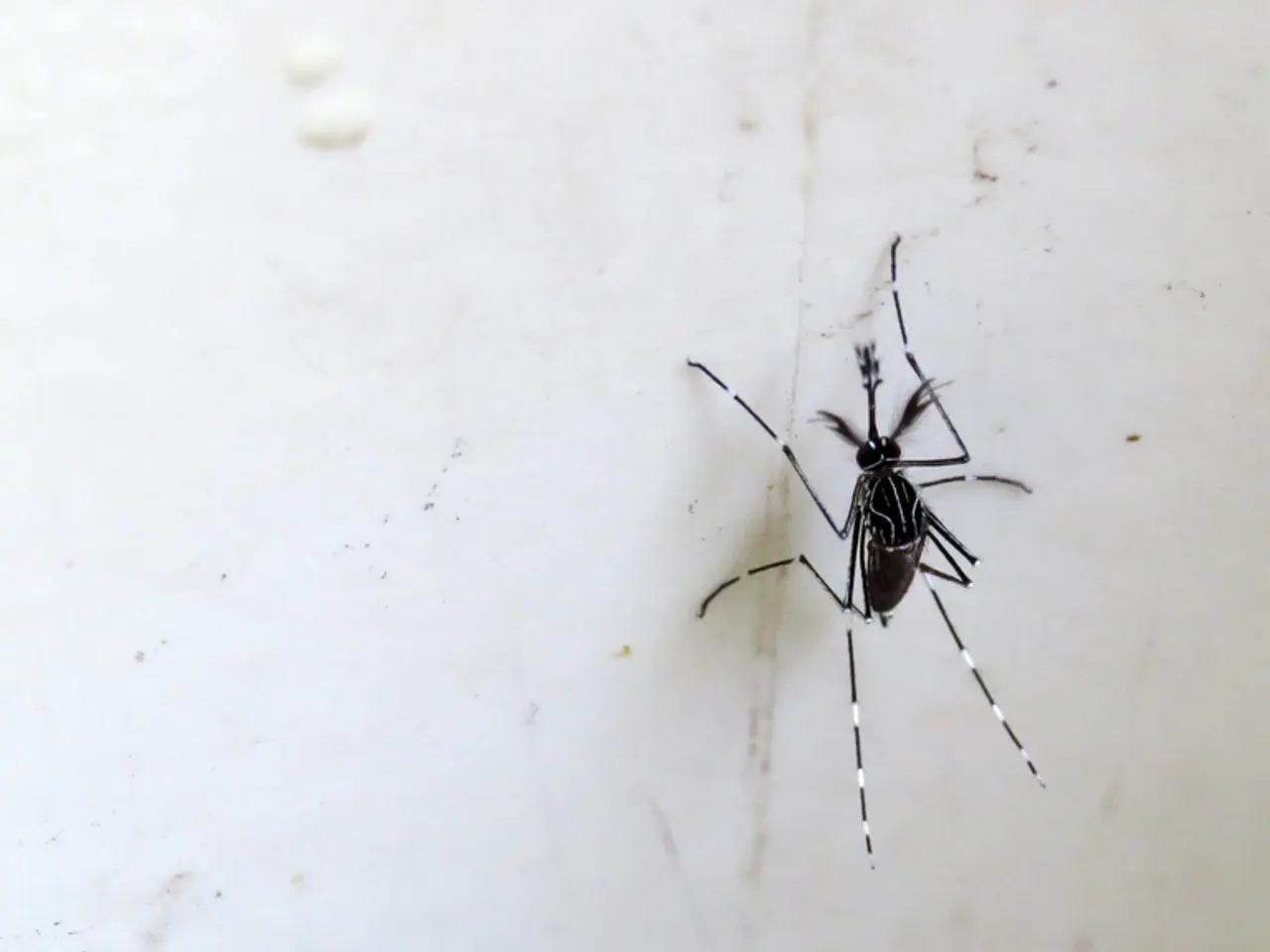Is it Appropriate for Australia to Worry About the Spread of the Chikungunya Virus?
In the warmer climates of Australia, particularly in northern Queensland and other tropical regions, the presence of competent mosquito vectors such as Aedes aegypti and Aedes albopictus has raised concerns about the potential for local transmission of the chikungunya virus. Although Australia has not experienced local transmission, cases among travellers returning from affected regions have been recorded, with the number of cases steadily increasing over the past few years.
In 2023, there were 42 cases, which increased to 70 in 2024, and 90 cases have already been reported in 2025. Key risk factors for the introduction and spread of the virus in Australia include the presence of suitable climate conditions during warmer months, international travel and imported cases from affected regions, and the presence of competent mosquito vectors.
Chikungunya is a mosquito-borne virus, transmitted primarily by the species Aedes aegypti and Aedes albopictus. The virus can be fatal in rare cases, particularly for infants, elderly individuals, and those with pre-existing medical conditions. Its most common symptoms include fever, joint pain, and joint swelling, although other symptoms such as headaches, rash, muscle pain, nausea, and fatigue may also occur.
To prevent the spread of the virus, Australia has implemented several prevention measures. These include public health surveillance and monitoring of both mosquito populations and imported human cases, vector control programs to reduce mosquito breeding sites, public education on personal protection measures such as using mosquito repellents, wearing protective clothing, and installing window/door screens, travel advisories for Australians visiting affected countries, and prompt diagnosis and isolation of suspected cases to prevent local transmission.
The World Health Organization has raised concerns about a significant increase in chikungunya virus cases, with outbreaks occurring in La Reunion and Mayotte in the Indian Ocean, parts of Southeast Asia, and some cases in Europe due to travel and imported infections. To protect against mosquito bites and reduce the risk of chikungunya, travellers are advised to wear loose-fitting, light-coloured clothing, apply insect repellent, sleep under mosquito nets, and avoid exposure during the day when mosquitoes are most active. These preventive steps also help protect against other mosquito-borne diseases like dengue and Zika.
While there is no specific antiviral treatment for chikungunya, paracetamol can help with fever and pain relief. There are two approved chikungunya vaccines in the United States, but neither is available in Australia. However, there is some evidence that Australians may have some protection against chikungunya due to immunity developed from exposure to the Ross River virus, a local mosquito-borne virus.
Despite the increased risk of chikungunya in Australia, the country has so far avoided major outbreaks seen elsewhere in 2025. Maintaining proactive mosquito control and traveler awareness is critical to minimising its local emergence and spread.
- The prevalence of medical-conditions, such as chronic diseases, can increase the fatality rate of the chikungunya virus, especially for infants, elderly individuals, and those with pre-existing health-and-wellness issues.
- With the increasing number of cases in Australia each year due to climate change and international travel, mental-health issues related to fear and anxiety about contracting the virus may also become a concern.
- In addition to the chikungunya virus, environmental-science researchers are concerned about the impact of neurological-disorders related to mosquito-borne diseases on the Australian ecosystem.
- Fitness-and-exercise can help strengthen the immune system, potentially reducing the severity of symptoms if an individual contracts the chikungunya virus.
- As the chikungunya outbreaks continue to spread globally, it is crucial for scientific research on environmental-science and medical-conditions to find a vaccine for the virus and develop effective treatments.




